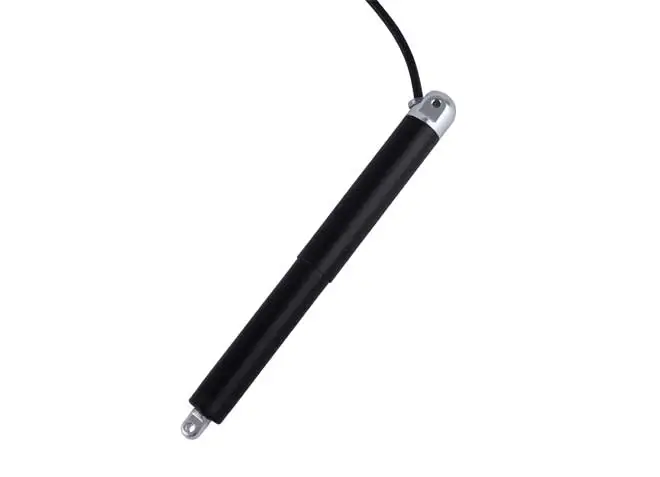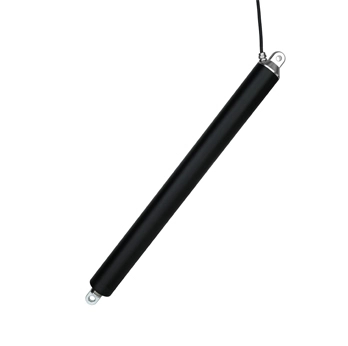Before diving into the differences between linear solenoids and linear actuators, it's essential to understand what these devices are. Both are used to create motion, but they do so in different ways and are used for various applications. Why should you care about the differences between a linear solenoid and a linear actuator? If you're involved in designing or maintaining systems that require motion, choosing the right component can significantly affect performance, efficiency, and cost.

Understanding Linear Solenoids
Definition and Basic Function
A linear solenoid is an electromechanical device that converts electrical energy into linear motion. It consists of a coil of wire with a movable iron core (plunger) that moves when current is applied.
How Linear Solenoids Work
When electrical current passes through the coil, it generates a magnetic field that pulls the plunger toward the center of the coil, creating linear motion. This motion can be used to push, pull, or control mechanical systems.
Key Applications of Linear Solenoids
Linear solenoids are widely used in various applications, including:
Automotive Systems: For controlling valves, locks, and switches.
Industrial Machinery: In automation systems for controlling levers and flaps.
Consumer Electronics: For activating buttons and switches in devices.
Understanding Linear Actuators
Definition and Basic Function
A linear actuator is a device that creates motion in a straight line. Unlike solenoids, actuators can be powered by electricity, hydraulics, or pneumatics, offering more versatility in application.
How Linear Actuators Work
Linear actuators convert rotational motion into linear motion, often through a screw mechanism or other mechanical systems. They can be used to lift, lower, push, or pull loads with high precision.
Key Applications of Linear Actuators
Linear actuators are found in:
Medical Devices: For adjusting beds, chairs, and other equipment.
Robotics: Providing precise movements in robotic arms.
Aerospace: In control surfaces and landing gear systems.
Comparing Linear Solenoids and Linear Actuators
Fundamental Differences
While both devices create linear motion, their mechanisms, power sources, and applications differ significantly. Linear solenoids are simpler and more straightforward but offer less control and power compared to linear actuators.
Power and Force Output
Linear actuators generally provide more force and power than solenoids, making them suitable for heavy-duty applications. Solenoids, on the other hand, are better suited for quick, short bursts of motion.
Speed and Precision
Actuators excel in scenarios requiring precise and controlled movements over a longer range, whereas solenoids are ideal for rapid movements over a short distance.
Durability and Longevity
Actuators tend to be more durable and long-lasting due to their robust construction, while solenoids might wear out faster in demanding applications.
When to Use a Linear Solenoid?
Best Situations for Linear Solenoids
Linear solenoids are ideal when you need a quick, simple, and cost-effective solution for creating linear motion. They work well in applications where precision and force are not critical.
Industry-Specific Applications
When to Use a Linear Actuator?
Best Situations for Linear Actuators
Linear actuators should be your choice when you require controlled, precise, and powerful linear motion over a more extended range.
Industry-Specific Applications
Technical Specifications Comparison
Electrical Requirements
Linear solenoids usually require a simple DC power supply, while actuators might need more complex power setups depending on their type (electric, hydraulic, or pneumatic).
Mechanical Properties
Actuators offer a broader range of motion and force options compared to solenoids, which are more limited in scope.
Environmental Suitability
Actuators are generally more robust and can operate in harsher environments, while solenoids might be more sensitive to temperature and humidity changes.
Cost Considerations
Initial Purchase Cost
Linear solenoids are typically less expensive to purchase than linear actuators, making them a good choice for budget-conscious projects.
Maintenance and Operational Costs
Actuators may require more maintenance due to their complexity, but they often last longer, potentially reducing long-term costs.
Installation and Integration
Ease of Installation
Solenoids are easier to install due to their simplicity, while actuators might require more careful integration, especially in systems needing precise control.
Integration with Existing Systems
Both solenoids and actuators can be integrated into existing systems, but actuators often offer more flexibility in complex applications.
Choosing between a linear solenoid and a linear actuator depends on your specific needs. Solenoids are ideal for simple, cost-effective solutions, while actuators offer more power, precision, and durability for demanding applications. Understanding the strengths and limitations of each device will help you make the right decision for your project, ensuring optimal performance and cost-efficiency.
 DDTG-16 Micro Tubular Linear Actuator
DDTG-16 Micro Tubular Linear Actuator
 DDTG-28 Micro Tubular Linear Actuator
DDTG-28 Micro Tubular Linear Actuator
 DDTG-38 Micro Tubular Linear Actuator
DDTG-38 Micro Tubular Linear Actuator













